
This was one of the favorite expletives used by Dick Dastardly, a cartoon antagonist created in 1968 by Hanna-Barbera, based on English actor Terry Thomas. Yes, there is a vague family resemblance.
▲https://www.youtube.com/watch?v=RXKJolS9Atg
▼Photo by Silver Screen Collection - Image courtesy gettyimages.com
https://www.imdb.com/Terry Thomas

English is a rich language, with mays to describe things, actions, and feelings, some words adding subtle differences to the overall meaning. Words are the tools of writers. It’s our job to put them together to amuse, teach, scare, entice, and entrance readers and put them in places, situations, and times they know well and those they have never experienced.
Yay, Words! Unfortunately, sometimes we use the same words over and over.
Somewhere I read an article by a Jewish author who wrote that, in English, about the worst thing you can wish on a person is to go have a sexual experience. He compared that to Jewish curses, which he felt embodied a true sense of inflicting harm.
YIDDISH / JEWISH CURSES
Taking that to heart, I did a little research on Yiddish curses, and I have to agree with the anonymous author.
Anglo-Saxon curses tend to deal with body parts, Catholic curses go for blasphemy, and the Middle and Far East curses focus on insulting ancestors. While traditional curses -- inverted blessings -- largely fell out of use in English at some point after Shakespeare’s death and before Hemingway’s birth, they have thrived in Yiddish into the twentieth century.
According to Marnie Winston-Macauley, “The Yiddish curse has a baroque splendor in its intricate ability to prophesize. The most spectacular lull the victim with a positive opening, which then turns into a juicy, literate, malediction that no mere obscene word could possibly convey. According to the proverb “A curse is not a telegram; it doesn’t arrive so fast.”
Like Jewish caviar, the Jewish curse must be savored. So, writers who don’t like using swear words in their novels or who perhaps want to enrich the quality of savoring ill will, you should take heed of the following examples of Yiddish curses.
source of photos: http://www.yiddishwit.com/About.html

● May you turn into a blintz and be eaten by your cat.
● May you drink too much castor oil.
● May someone throw salt in your eyes and pepper in your nose.
● May you run to the toilet every three minutes or every three months.
● May you crap blood and pus.
● May you grow a wooden tongue.
● May your mouth be in your rear.
● May you swallow an umbrella and may it open inside you.

● May leeches drink you dry.
● May I live long enough to bury you.
● May your head fall off.
● May you be transformed into a chandelier, to hang by day and to burn by night.

● May you turn into a centipede with ingrown toenails, may onions grow in
your navel and may you lie in the earth and bake bagels.
● May God should visit upon you the best of the Ten Plagues.
● May venereal disease consume your body.
● May you enjoy a good time with plenty of good Vodka – and may your blood turn to whiskey, so that 100 bedbugs get drunk on it and dance the mazurka in your belly button.
● May you get passage out of the old village safely, and when you settle, may you fall into the outhouse just as a regiment of Ukrainians is finishing prune stew and 12 barrels of beer.

eyes.
● May a wheel run over your skull.
And last, but not least, my favorite.
● May you have a thousand mother-in-laws.
IRISH CURSES
Well, some of those Jewish curses are pretty graphic, and they definitely have the impact of some serious ill will. Can any other culture match that?
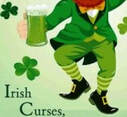
According to gaelicmatters.com (no author identified) “We may not like to admit it openly but Irish people swear a lot and we have to be careful when abroad. Our loose tongues can offend U.S and British ears in particular. I smile when Americans refer to the use of 'f@*k' as the F-bomb because of its effect in polite circles. Though not by origin a Gaelic word, in Irish circles the use of the word is commonplace and casual, to the point of rendering it meaningless at times.”
Cursing in other languages often does not translate well into English, or at least in a meaningful way. Irish Gaelic has enriched the way Irish people speak English in many ways. The importing of many a mallacht (the Irish word for a curse) from Gaelic to English has added color, even when more sinister than funny. Here is a sample of Irish Curses.
● Curse of the seven snotty orphans on you!
(Since I don’t know what the curse of these orphans is, that doesn’t have much impact on me.)
● The crows’ curse on you.
● May you die roarin' like Doran's ass.
● May you all go to hell and not have a drop of porter to quench your eternal thirst.
(Porter is a type of black beer, like Guinness)
● May the Devil take your last schilling.
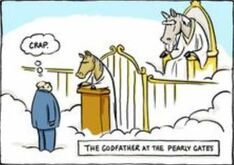
● May you never have a hearth to call your own.
● May the lamb of God stir his hoof through the roof of
heaven and kick you in the arse down to hell.
● May you scratch a beggarman’s back one day.
(May you lose everything you have.) ▼Photo: http://clipart-library.com/
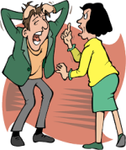
● May you have the runs on your wedding night.
● Pissmires (ants) and spiders be in your marriage bed.
● Burning and scorching on you. (Dóite agus loisceadh ort.)
● May you leave without returning. (Imeacht gan teacht ort.)
● May you fall without rising. (Titim gan eiri ort.)
Drawing by Dean Murray
▼Photo source: http://www.deanmurray.com/farting-woman

● Kiss my butt! (Póg mo thoin!) pronounced <pohg muh hoin>
● May the cat eat you and the devil eat the cat!
(Go n-ithe an cat thú is go n-ithe an diabhal an cat)
● Breaking and crushing to your bones!” (Briseadh agus brú ar do chnámha)
Getty images/imagezoo
▼ Photo source: https://www.dailymail.co.uk/insect-stings
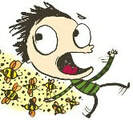
● May your spuds be like rosary-beads on the stalk.
● May the curse of Mary Malone and her nine blind illegitimate children chase you so far over the Hills of Damnation that the Lord himself can't find you with a telescope.
● May you be a load for four before the year is out. (wishing death on someone)
● May you be eaten by an awful itch!
● May the curse of Mary Malone and her nine blind illegitimate children chase you so far over the Hills of Damnation that the Lord himself can't find you with a telescope.
Apparently, the Irish have many of the same ideas of ill will and misfortune, such as the uncontrollable itch, but except for the last one, they tend to lack the dramatic flourish of the Yiddish curses. I was a little disappointed.
THE REST OF THE WORLD
I’m sure every culture and religion in the world has its own version of “curses” to wish misfortune on others, just as they all have their “blessings”. However, they are not as easy to find on the internet as you might think. When you Google most of them, you get plain old curse words or definitions of malediction, ill will, curse, or whatever word you used to indicate willing someone bad luck.
It’s true you can add “May you…” to many of them and get a curse, just as many folk sayings can be turned into curses by adding the correct words to put the saying into the proper format. A Scottish example of a curse word (phrase) converted into a malediction by adding “May you…”
May you suck the sweat off a dead man’s balls.
Yikes! Otherwise, Scottish curses get to be long dramatic recitations against whole countries, families, generations, or other groups of people. For example, in 1525 the reivers (border raiders) had become such a nuisance that the then-Archbishop of Glasgow, Gavin Dunbar, put a curse up all the reivers of the borderlands (and this is only part of the curse).
"I curse their head and all the hairs of their head; I curse their face, their brain (innermost thoughts), their mouth, their nose, their tongue, their teeth, their forehead, their shoulders, their breast, their heart, their stomach, their back, their womb, their arms, their legs, their hands, their feet, and every part of their body, from the top of their head to the soles of their feet, before and behind, within and without."
"I curse them going and I curse them riding; I curse them standing and I curse them sitting; I curse them eating and I curse them drinking; I curse them rising, and I curse them lying; I curse them at home, I curse them away from home; I curse them within the house, I curse them outside of the house; I curse their wives, their children, and their servants who participate in their deeds. I (bring ill wishes upon) their crops, their cattle, their wool, their sheep, their horses, their swine, their geese, their hens, and all their livestock. I (bring ill wishes upon) their halls, their chambers, their kitchens, their stanchions, their barns, their cowsheds, their barnyards, their cabbage patches, their plows, their harrows, and the goods and houses that are necessary for their sustenance and welfare."
That’s a little long and overdone for cursing someone who cuts in front of you on the freeway.
Another way to search for real curses is to Google folk tales, legends, proverbs, magic spells, and so on. Those are convertible as well, but it is hardly worth the effort. No one else has bedbugs dancing the mazurka in your belly button.
P.S. A writer can avoid using so many curse words by putting some of them in other languages if it's logical for your story, and one character can insult another with legitimate words that not most people don't know.
Just sayin’.□
Sources
https://ireland-calling.com/wisdom-may-the-cat/
http://www.gaelicmatters.com/irish-curses.html
https://en.wikipedia.org/wiki/Dick_Dastardly
http://yiddishradioproject.org/exhibits/stutchkoff/curses.php3
https://www.kveller.com/these-yiddish-curses-are-pretty-epic/
https://thoughtcatalog.com/nico-lang/2013/10/61-hilarious-yiddish-insults-you-need-to-know/
https://forward.com/schmooze/358803/why-dont-people-use-yiddish-curses-properly-in-english/
http://www.aish.com/j/fs/Yiddish_Curses_for_the_New_Millennium.html
https://www.irishtimes.com/life-and-style/abroad/54-irish-curses-you-won-t-have-learned-in-school-1.3011527
http://www.gaelicmatters.com/irish-curses.html
https://www.irishcentral.com/roots/swears-cursing-irish-gaeilge
https://www.irishcentral.com/roots/top-ten-strange-and-weird-irish-curses-when-you-really-want-to-hex-your-enemy-171586881-237766231
https://erinsromance.wordpress.com/tag/irish-curses/
https://lovindublin.com/feature/best-irish-curse-words
http://clipart-library.com/
Book: Awa' an' Bile Yer Heid!: Scottish Curses and Insults By David Ross



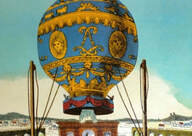
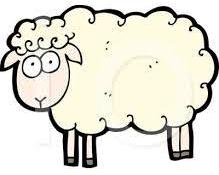
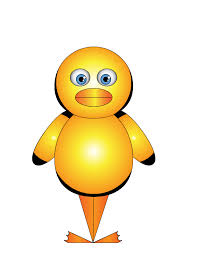
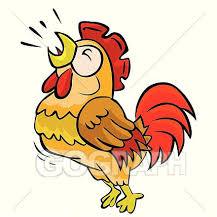



































 RSS Feed
RSS Feed